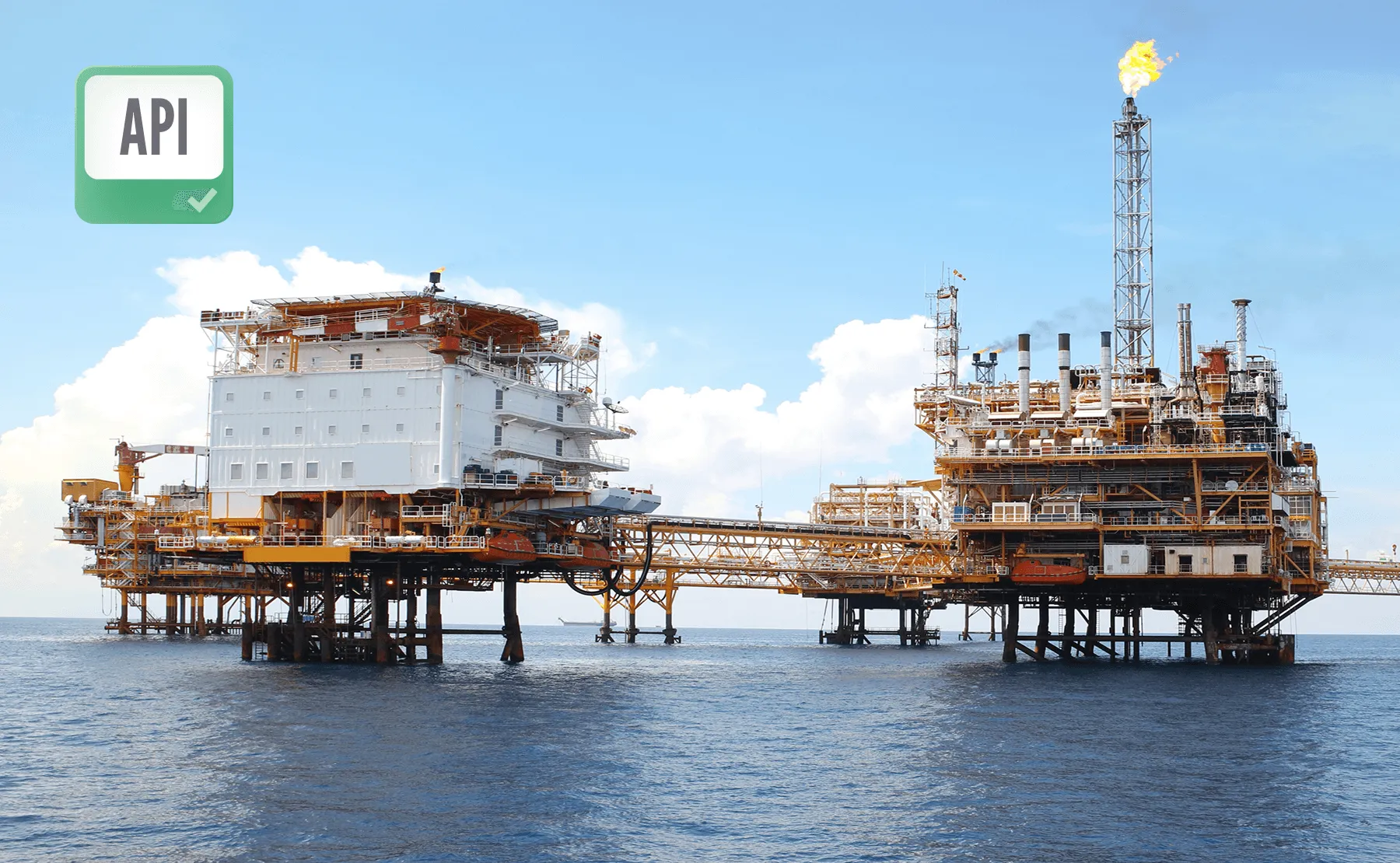Run both LRFD (1993) and WSD (2007) checks — fully integrated and up to date.
Automate axial, bending, and weld strength checks for tubular joints and beams.
Account for load transfer, overlapping braces, resistance coefficients, and joint types (K, TY, X).
Joint Finder auto-detects brace and chord configurations, even with edge-case geometry.
Use AISC for non-tubular shapes and API for tubular members in a single workflow.
Export all calculations with criteria plots, formulas, and cross-referenced IDs in one click.

he American Petroleum Institute (API) sets globally recognized standards for the oil and gas industry, with a strong focus on offshore structural integrity and safety.
API RP 2A-LRFD (1993) This Load and Resistance Factor Design standard defines structural requirements for steel cylindrical elements and joints used in fixed offshore platforms. SDC Verifier implements Sections D (Cylindrical Members) and E (Connections), supporting joint classification (K, TY, X), load transfer, and overlap checks.
API RP 2A-WSD (2007) This Working Stress Design standard offers an alternative method for planning and constructing fixed offshore structures. SDC Verifier supports member and joint checks with Stress Increase Factors for different design conditions (Normal, Survival, Accidental).
Both standards are tailored for circular tube calculations and can be used with AISC standards to cover non-tubular elements. API checks are fully automated inside SDC Verifier and support complex geometries, brace interactions, and resistance calibration for safe offshore design.
ABS Standards
AIJ Standards
AISC Standards
API Standards
ASME Standards
Australian Standards
British Standards
Bureau Veritas Standards
DIN Standards
DNV Standards
DVS Standards
EN 13001 Standard
Eurocode 3
Eurocode 9
F.E.M. 1.001
FKM Standard
IACS Standards
ISO
Lloyd’s Register (LR) Standards
NORSOK Standards
VDI Standards
We support API RP 2A-LRFD (1st, 1993) and API RP 2A-WSD (21st, 2007) for offshore platform design verification.
Yes. Both API RP 2A-LRFD and API RP 2A-WSD include dedicated joint check functionality for circular tubular connections.
No. SDC Verifier works directly with your FEA model in Ansys, Femap, or Simcenter 3D without additional preprocessing.
Yes. API standards are designed for cylindrical elements, and SDC Verifier enforces this requirement during setup.
Absolutely. You can configure API checks for tubulars and AISC standards for non-tubular shapes in one model.